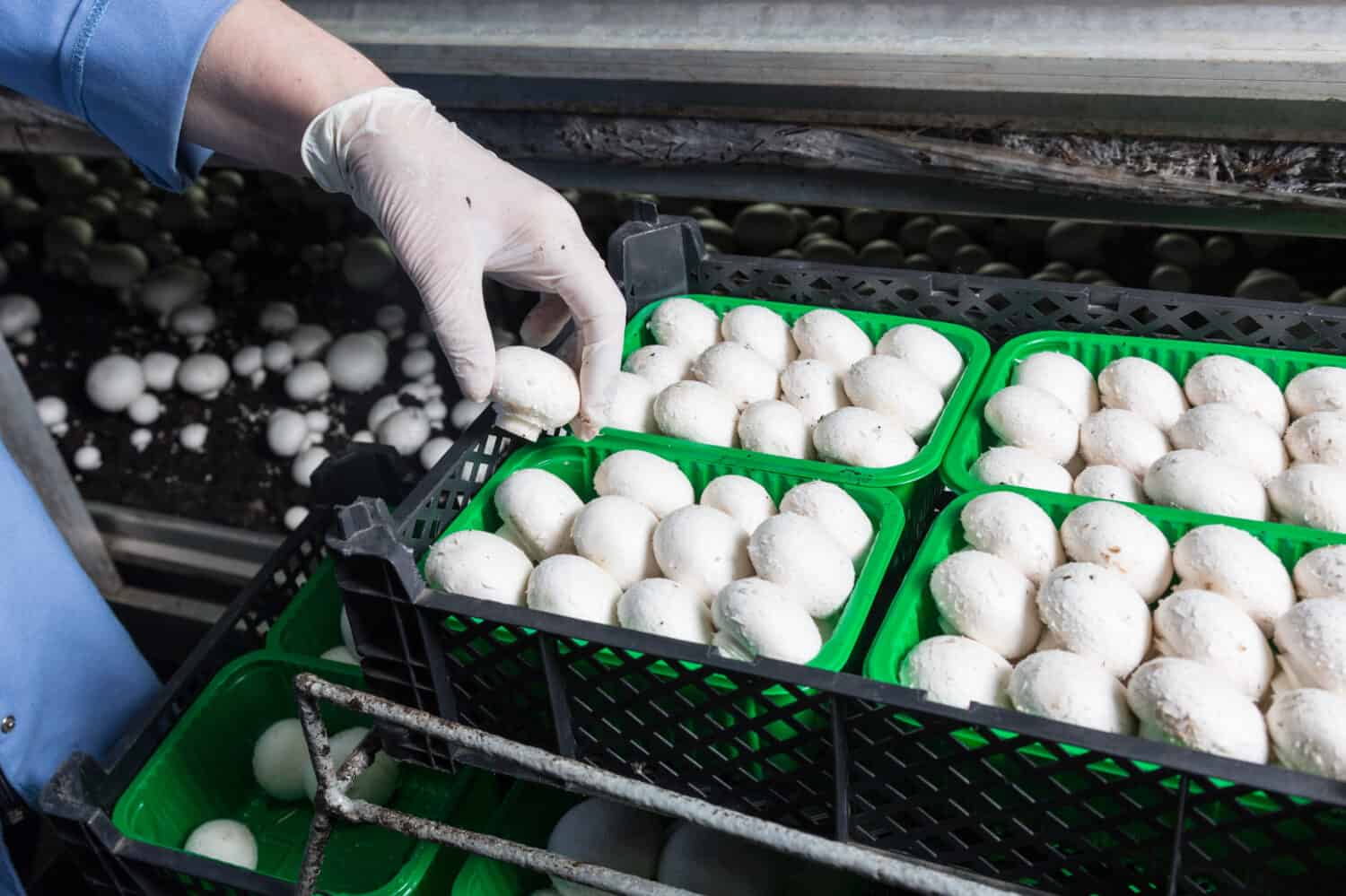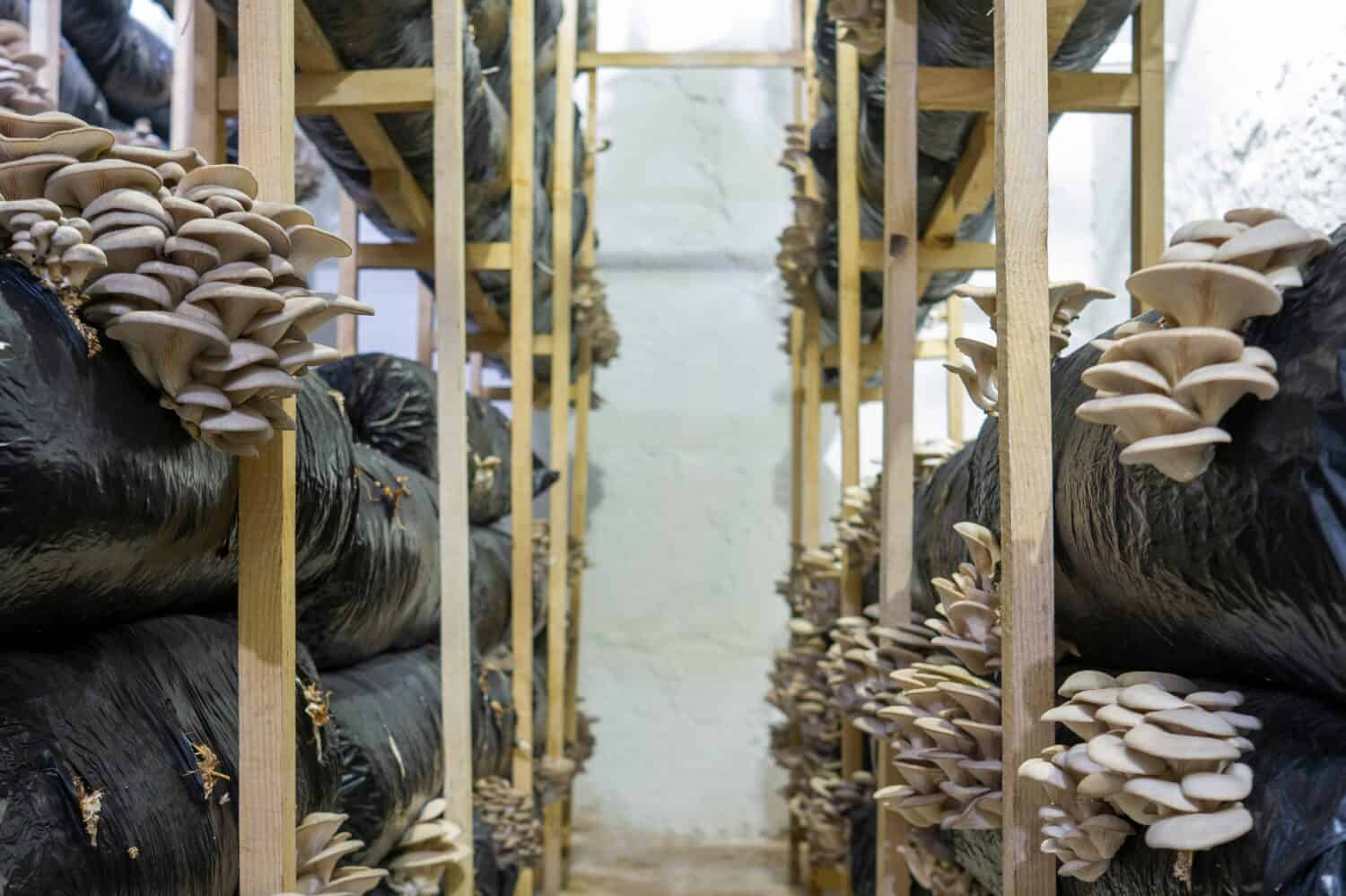Just 30 miles west of Philadelphia there’s a locale with a curious reputation. You can’t drive into town without seeing its moniker spelled out on the water tower. Right there in giant letters, it says “Kennett Square, Mushroom Capital of the World.”
Half of the mushrooms grown in the U.S. — around 500 million pounds a year — are grown within a 10-mile radius of Kennett Square, Pennsylvania. And this small borough in the countryside of Chester County celebrates that fact with a whole lot of hoopla!

The annual mushroom festival in Kennett Square draws up to 100,000 visitors.
The Town Where Fungi Are Fun
Every September the borough of Kennett Square revels in its status with a mushroom festival that focuses on its famous fungi. You’ll find a mushroom harvest contest, the cute-as-a-button photo contest, and the painted mushroom silent auction. You can enjoy mushroom soup, salads, and sandwiches. It’s an event that brings around 100,000 mushroom aficionados to town every year.
But how did it all begin?

The Spores from ‘Across the Pond’
The story begins on a flowery note.
It all goes back to 1885 when William Swayne had a thriving flower business in Kennett Square. But he wanted to make additional use of growing areas below his benches of carnations.
At that time mushrooms were big in England, but not so much in the United States. So, Swayne packed up and took a trip to the U.K. to see how this novel agricultural business worked. He must have liked what he saw, as he returned home to Pennsylvania with spores.
Little did he know that this small borough would eventually become known as the mushroom capital of the world.

Half of all the mushrooms produced in the U.S. are grown within a ten-mile radius of Kennett Square.
©Kartinkin77/Shutterstock.com
Swayne and several other Quaker florists lovingly tended those spores, which became what is now, 138 years later, the source of a $4 billion-a-year industry for Chester County. To cap that off, mushrooms have also become Pennsylvania’s number one cash crop!
An Undercover Crop
Take a tour of a Kennett Square mushroom farm, and you might be surprised at what you’ll learn. For one thing, commercial mushroom farms are all undercover operations — meaning their crop is raised indoors.
Large farms will have buildings known as “traditional Pennsylvania mushroom doubles.” Each of these contains 8,000 square feet of growing area.
The most popular fungus grown in the mushroom capital is the white button, the second being the brown cremini. Harvest time is critical, as mushrooms can double in size in just 24 hours. That means what was a small cremini will mature in an incredibly short time into the grilling favorite, a hefty portobello.

Commercial mushroom farms grow their crops indoors in large rooms where the temperature is closely controlled.
©dimdiz/Shutterstock.com
What Are Mushrooms Fed?
Mushrooms aren’t grown in soil, but rather in a special substrate. Mixed into that are agricultural waste products, such as manure, corn cobs, hay, and even cocoa shells from Pennsylvania’s Hershey chocolate factory.
Mushroom spores are “inoculated” into the nutrient-rich substrate beds to germinate. When they do, the fungus looks very similar to a piece of food that’s become moldy.
Of course, that doesn’t look anything like what we chop up for a stir-fry or add to an omelet. That’s because the edible part is technically the fruiting body of the fungus.
In just a few weeks, after the farmer carefully adjusts the temperature, airflow, and water, the fruiting bodies are ready for harvest. Kennett Square mushrooms are all harvested by hand.
The Health Benefits of Mushrooms
The multi-billion-dollar mushroom industry likely wouldn’t be what it is today if not for the recognized health value of mushrooms. And with all of the amazing benefits emerging in some recent research, we may need even more mushroom farmers to satisfy the demand!
A recent roundup of mushroom research by UCLA Health found that this fabulous fungus can not only enhance the immune system but also promote lower cholesterol levels, protect brain health, and may even reduce the risk of cancer.
Mushrooms contain a compound called ergothioneine, an antioxidant “that prevents or slows cellular damage,” says UCLA Health. While it stated that all mushrooms have ergothioneine, some varieties, such as oyster, maitake, and shiitake have even more.

Knowing which mushrooms are safe to eat is something best left to professionals.
©Rita Romanyshyn/Shutterstock.com
Beware of Becoming a ‘Mushroom Hunter’
But with all the good news about mushrooms, there’s a really important warning to keep in mind about the peril of trying to pick your own.
There are around 100 species of wild mushrooms that are poisonous and up to 20 species that can be lethal when eaten. And, unless you are truly an expert, knowing which are edible and which are not can become a very risky guessing game.
As Dr. B Zane Horowitz, medical director of both the Oregon and Alaska poison centers wrote, “No simple rule exists for distinguishing edible mushrooms from poisonous mushrooms.” Most cases of mushroom toxicity, he says, are due to misidentification by an “amateur mushroom hunter.”
So, if you enjoy mushrooms for their taste, health benefits, or both, the safest place to find them is at the grocery store, where they’re also relatively inexpensive. And if you live in the U.S., the chances are excellent that they originated from the mushroom capital of the world!
Thank you for reading! Have some feedback for us? Contact the AZ Animals editorial team.








